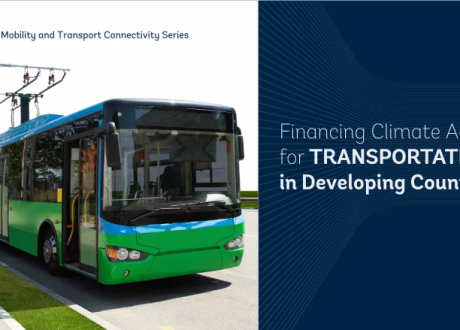
Report: Investing in resilient transport in low, middle-income countries yields $4.2 trln in net benefits
Investing in resilient transport in low- and middle-income countries (LMICs) requires $417 billion annually between ...

The Africa SDGs Dashboard shows that since 2000, Africa has made the most progress on SDGs 3 (good health and well-being), 4 (quality education), 6 (clean water and sanitation), 15 (life on land), and 17 (partnerships for the Goals).
The dashboard reveled that data is insufficient for nearly 120 indicators, with the most significant gaps reported for SDGs 5, 11 (sustainable cities and communities), 12, 14, 16, and 17.
The region has made the least progress on SDGs 2 (zero hunger), 8 (decent work and economic growth), 10 (reduced inequalities), and 12 (responsible consumption and production). While indicators for SDGs 5 (gender equality), 13 (climate action), 14 (life below water), and 16 (peace, justice, and strong institutions) are insufficient to provide the full picture of progress, the dashboard flags that since 2000, the region has regressed on SDGs 13 and 16.
The African Center for Statistics of the UN Economic Commission for Africa (UNECA) launched the Africa SDGs Progress Dashboard – an online tool, developed to assist evidence-based policymaking in Africa on the SDGs and Agenda 2063, ‘The Africa We Want.’
The dashboard was developed jointly by the five UN Regional Commissions – UNECA, the UN Economic Commission for Europe (UNECE), the UN Economic Commission for Latin America and the Caribbean (ECLAC), the UN Economic and Social Commission for Asia and the Pacific (ESCAP), and the UN Economic and Social Commission for West Asia (ESCWA)
Hosted by the Africa UN Data for Development Platform, the dashboard provides regional, subregional, and country-level data on progress made on each of the Goals, targets, and indicators, along with estimates of how likely those are to be achieved by 2030, based on the current rate of progress.
To assess the regional and subregional progress towards achieving the SDGs, the dashboard uses two principal measures – the current status index, which shows how much progress has been made since 2000, and the anticipated progress index, estimating the likelihood of achieving the target values by 2030.
The dashboard highlights that “whether a Goal can be achieved by 2030 depends not only on the distance traveled so far, but also on the pace of progress going forward.” Regarding anticipated progress, it indicates that only ten indicators are on track to being achieved by the 2030 deadline. Progress on most of the SDG targets needs to be accelerated. The current trends will need to be “reversed” to achieve SDG targets on poverty, food security, deforestation, biodiversity, water use efficiency, disaster risk reduction (DRR), and treatment of hazardous waste, among others.
Investing in resilient transport in low- and middle-income countries (LMICs) requires $417 billion annually between ...
There are emerging and innovative trends in climate litigation as activists and citizens worldwide are ...
The transition to electric mobility continues to advance rapidly, reshaping global energy and auto markets. Electric ...


اترك تعليقا